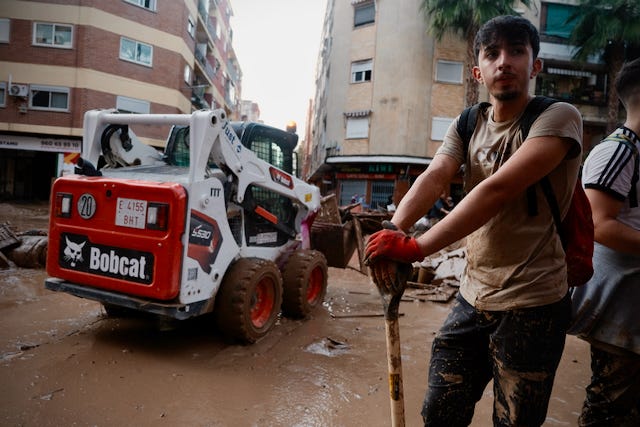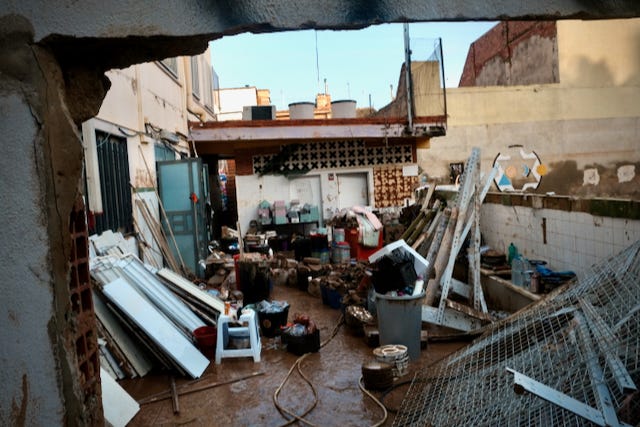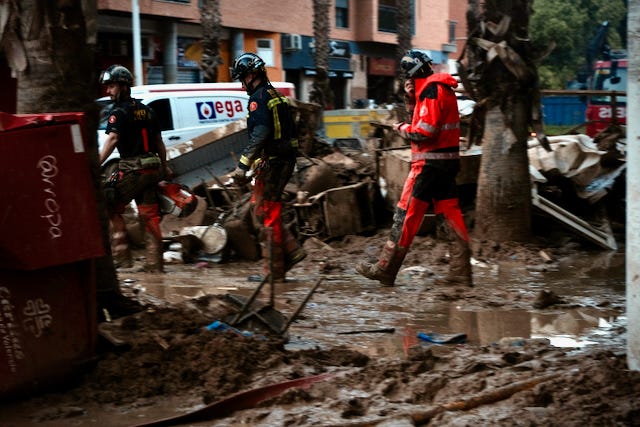Catarroja, Valencia, day 6 after the flood: Clean-up has begun in earnest
It's the sixth day after the flood devastated L'Horta Sur, the region to the south of the city of Valencia, and the relief teams are looking more professional and organized than before.
NOTE: Needing a break from the political disaster in the US, I moved to the Avinguda la Rambleta in Catarroja, located just 7.6 km south of the beautiful city of Valencia. Now I’ve found myself smack in the middle of a natural disaster.
For the past five days, I've focused on securing food, drinking water, and whatever supplies I can find, while walking around the surrounding area trying to comprehend the extent of the devastation. I've been answering constant questions from family and friends across California, Florida, Colombia, Venezuela, and Spain. Today, I've decided that I need to start writing my observations — both for the practical goal of answering recurring questions only once, and for the personal necessity of processing what I'm living through. Additionally, friends and family have asked for more information, and residents who've seen me taking pictures have asked me to share their story.
I'm scheduled to travel to L.A. in December. Until then, I'll share what I can when time permits.
In what follows, I'll try to make statements of fact about what I'm observing in this patch of world I inhabit, along with personal reflections stemming from those observations. I used to be a journalist and, inevitably, some of my rusty journalistic habits will inform how I write. However, nothing I write is intended to follow rigorous journalistic standards.
Day 6: Clean-up has begun in earnest
Since last night, I’ve seen a sizable increase in the quantity, quality, and size of arriving machinery. Backhoe loaders and dump trucks rumble through the streets, while tow trucks with chains work to lift cars from the chaotic piles where they ended up on day one, moving them to spots where they can be retrieved later. From my fourth-floor window, I can hear the constant rumble of trucks mixing with the deafening reverse signal alarms blaring from several vehicles at once. The clean-up has begun in earnest.
At midnight, they stopped. For good, I thought. But minutes later, I heard them again, both to the south and north on la Rambleta. As far as I could tell, they worked through the night.
Midmorning, November 4
I awoke again to the rumble and reverse alarms of heavy machinery. Immediately, I noticed a path had been cleared on the sidewalk, allowing people to walk. Since we first woke up on October 30th to see the devastation in our area, it's been impossible to use it. All the cars, without exception, had been dragged by the floodwaters — running north to south — and pushed into any available outlet: gates, doors, and side streets running east-to-west, creating the piles of cars and debris blocking circulation seen on the news.
Until now, we've had no choice but to walk in the middle of the street, often trudging through deep mud. For those of us lacking rain boots, it means risking your shoes getting trapped in the mud or falling badly on your ass.
But this morning, I was relieved to see the narrow paths that have been cleared on both sides of our street. I decided to go out and see for myself how far these paths go.

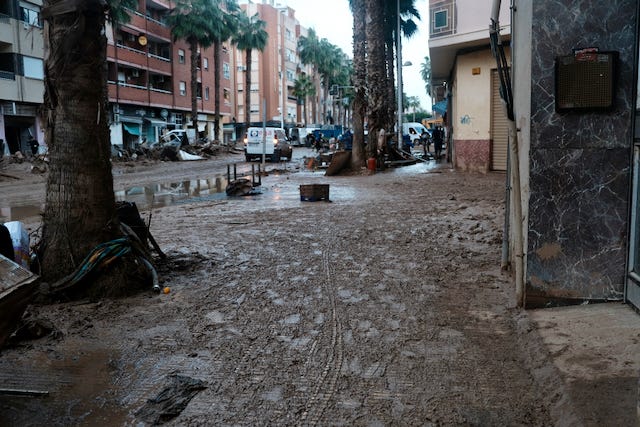
Heading out in the afternoon
I’ve worn the same pair of shoes every day since October 29. On the first day, I wrapped them in garbage bags and tied them quickly around my ankles. They quickly came off; I slipped and nearly fell several times; twice, a shoe came off and I had to pull it from the mud, ending up with mud between my toes. Over the next days, I improved the design, trying larger and sturdier bags, trimming them for a better fit, and adding masking tape and a string around my calves to keep the improvised “boots” from slipping down. On November 4, I fashioned a design to wear inside my shoes — now nearly destroyed — that finally kept the mud out. It didn’t solve the slipping problem, but it was progress.
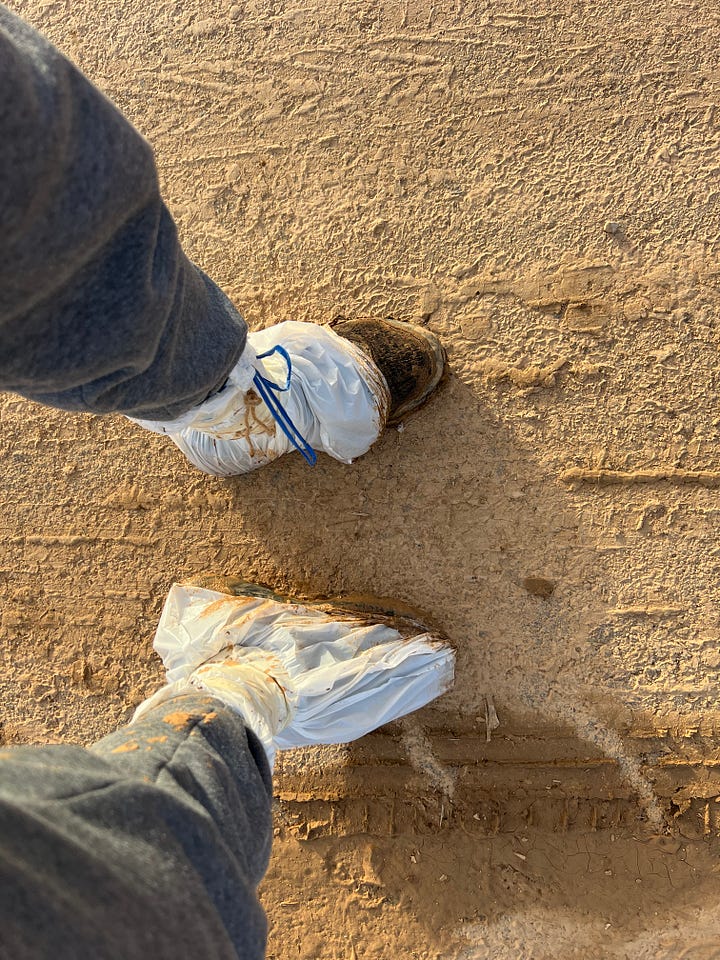
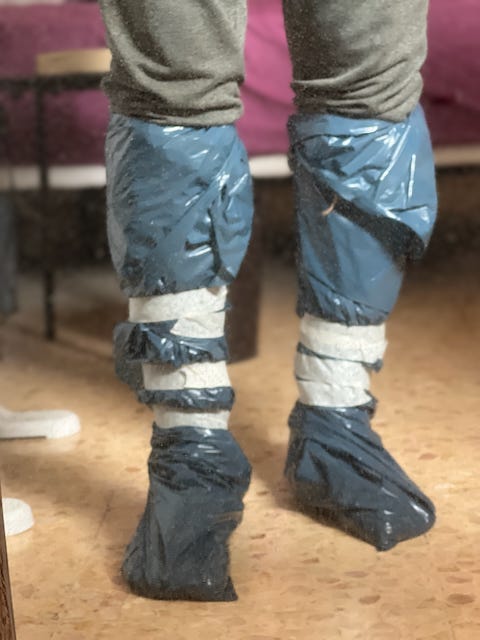
I was able to walk four blocks south. There were two distinct clean-up patterns: one self-organized, stemming from the needs and actions of the community and volunteers; the other professionally coordinated, coming from the government, army, relief organizations, and Protección Civil teams from different regions — Aragón, Sevilla, Catalunya...
Business owners were cleaning inside their locales, helped by family and friends. They had piled up most of what they'd lost — which was nearly everything — on the street, while many used high-pressure hoses to remove the brown mud crust that covered everything. Their businesses were getting cleaner inside, while the piles were getting bigger on the outside.
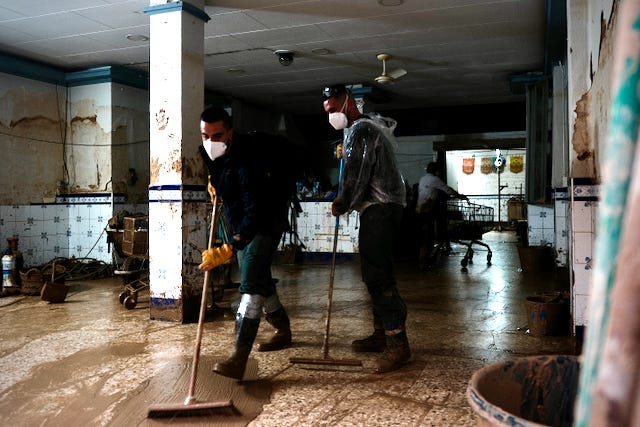
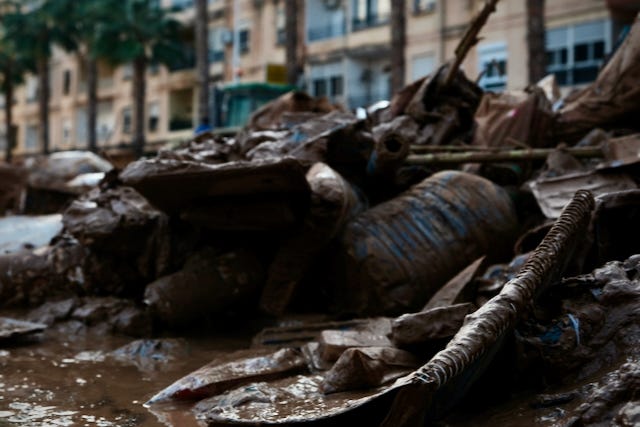
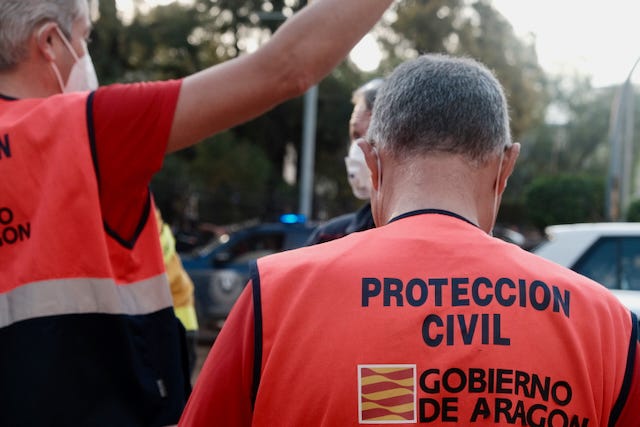
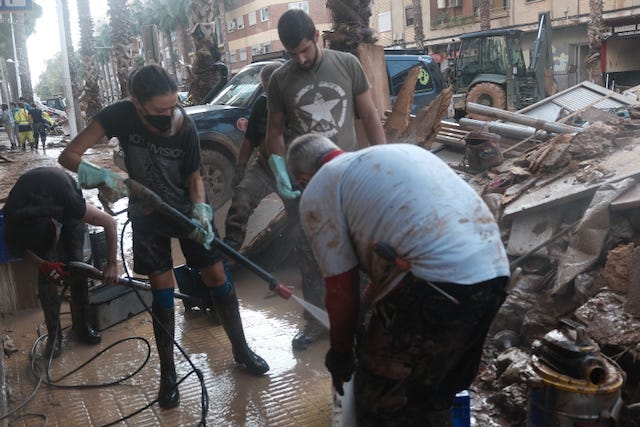
A woman standing at the entrance of what used to be a hair salon sensed my presence and looked in my direction. She lowered her iPhone and glanced at my camera, which hung at my side. She spoke to me:
"¿Quieres un perrito?" I thought she said.
"¿Un perrito? Creo que no," I said.
"No, no. ¿Que si eres un perito?" she said.1
I asked why she thought I was a perito, without even knowing what kind of perito she meant. It turned out she was expecting a loss assessor, who would survey the damage and determine her compensation. She'd seen my camera and noticed how I was looking at everything — like I was assessing the damage — and thought I was the perito she awaited.
Her name was Leonor, from Bucaramanga, Colombia. Some years ago, she had started Elohim Peluquería; the business had established itself, and she was happy about it. She told me what every single business owner on my street has said: nothing could be salvaged, not even the roll-up security grill. Beyond the structure itself, nothing was left. That's why she was patiently waiting for the perito — to find out what the future held.
We talked for a while longer. She mentioned that she liked Valencia and guessed that my Spanish accent was Venezuelan. I told her about my Colombian family, my grandma, my childhood visits to Cúcuta. I joked about her not remembering the last name of the family in Cien años de soledad, the novel that is the pride of every Colombian. “It’s Buendía,” I said, “like my second last name.” Before I left, she let me take her picture.
"De verdad pensé que eras el perito," she said as I was leaving.
"Lo siento mucho. No soy ese tipo de perito. Sólo soy un perito en penas," I said, and we laughed together.2
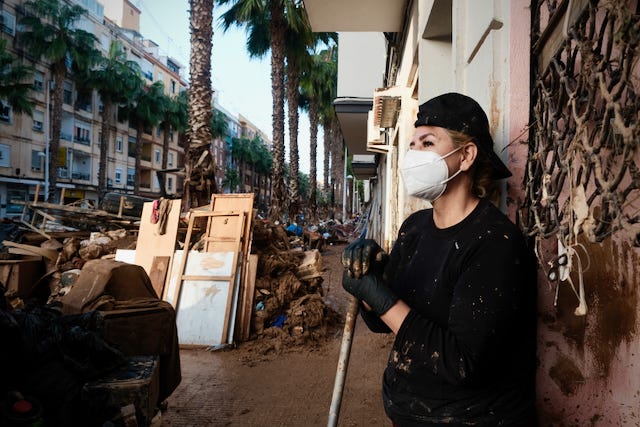
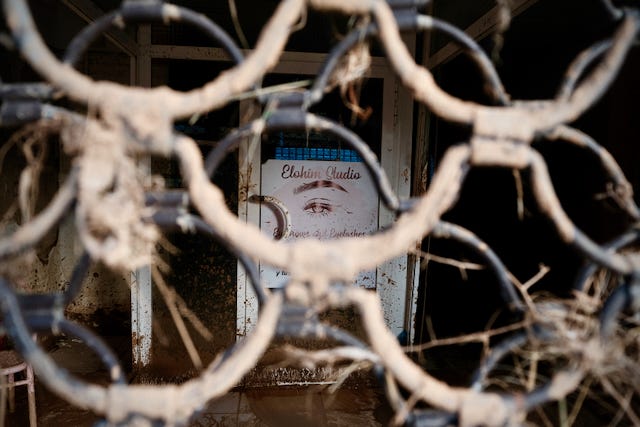
I kept walking back, smiling at the memory of the conversation, but feeling somehow exhausted. It was not the first such conversation I’ve had since the disaster, and I knew it wouldn’t be the last. As I kept snapping pictures, I realized two things at once: the bustle extending through Avinguda la Rambleta is the first real sign that recovery is starting, yet the extent of the destruction is so immeasurable no one can assess how long it will take to go back to any kind of normality.
I kept taking pictures, and every single one told me the same story: we are safe, we have help, and we have a future — though muddled by the present chaos.

“Do you want a little dog?” I thought she said.
“A little dog? I don’t think so,” I said.
“No, no. I’m asking if you are an assessor?” she said.
"I really thought you were the loss assessor," she said as I was leaving.
"I’m so very sorry. I’m not that kind of assessor. I’m just an assessor of sorrows," I said, and we laughed together.



